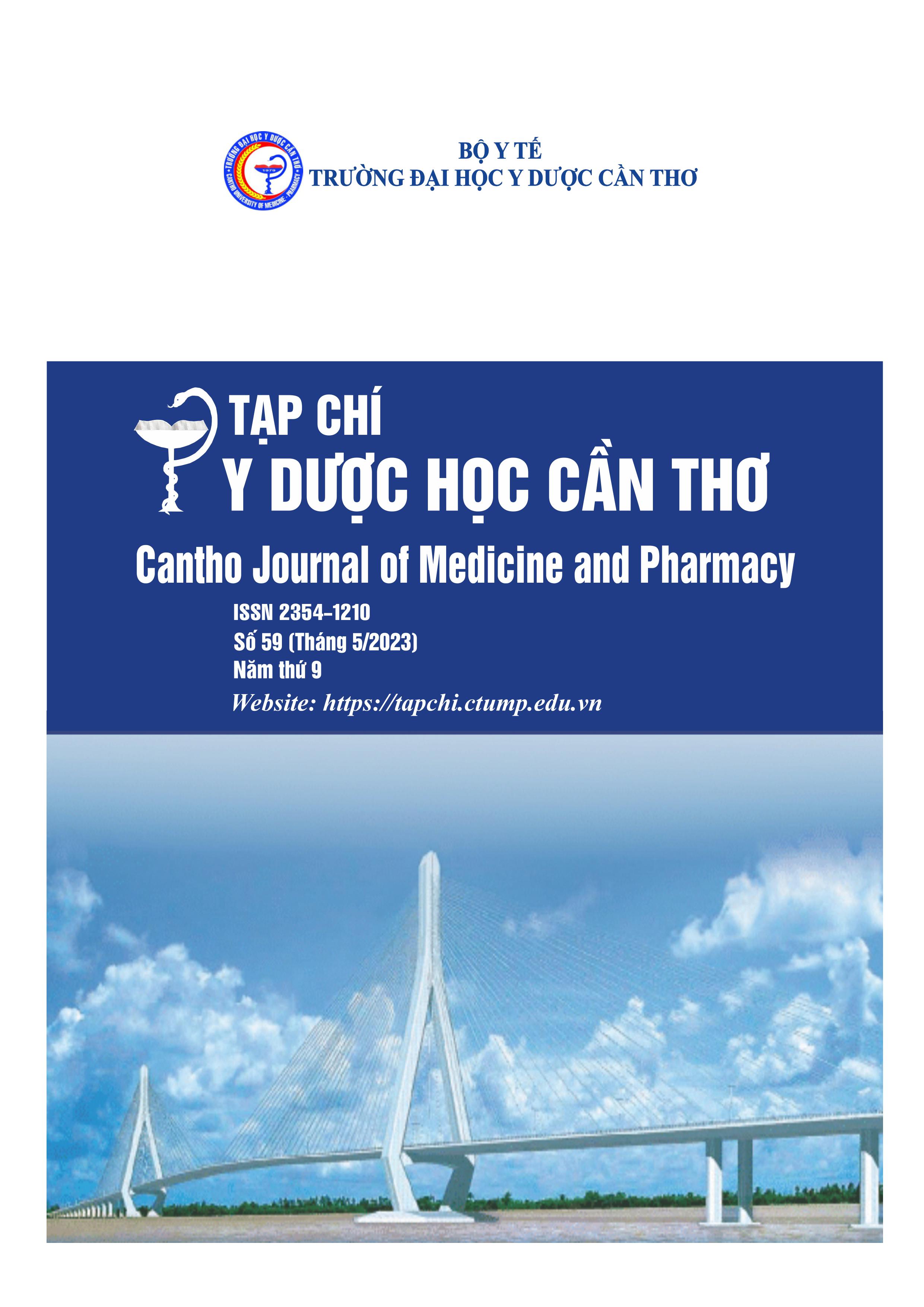THE LINEAR CORRELATION OF LDL-CHOLESTEROL BETWEEN INDIRECT AND DIRECT QUANTITIES METHODS IN DIABETES PATIENTS
Main Article Content
Abstract
Background: Using the formulas to estimate the amount of LDL-cholesterol indirectly has been allowed and widely applied in laboratories, to reduce the time to answer test results and save costs for patients. Objectives: 1) To determine the correlation by linear regression of LDL-C between indirect and direct methods of quantification. 2) To determine the percentage difference of LDL-C between indirect and direct methods of quantification on diabetes patients. Materials and method: A cross-sectional descriptive study was carried out of 817 diabetic patients who were indicated for cholesterol, triglyceride, HDL-C and LDL-C testing. By the way, we estimated LDLC concentration by using the Friedewald and Vujovic formulas. Results: The correlation of LDL-C by Vujovic's
indirect quantitative method compared with LDL-C level by direct method was r=0.785, with linear equation y=0.696x+0.769 (p<0.05). The correlation of LDL-C by Friedewald's indirect quantitative method compared with LDL-C level by direct method was r=0.723, with linear equation y=0.56x+1.390 (p<0.05). The LDL-C bias between Vujovic indirect method with LDL-C in direct method was 4.38% (p<0.05). The bias LDL-C between Friedewald indirect method with LDL-C in direct method was 10.08% (p<0.05). Conclusions: In diabetes patients, there is a strong, positive linear correlation in LDL-C concentration between Vujovic and Friedewald’s indirect quantitative methods with direct quantification. The bias of LDL-C concentration in the Vujovic is lower than in Friedewald.
Article Details
Keywords
Friedewald, Vujovic, LDL-C, direct quantification
References
2. Su Yeon Choi, et al. Difference between calculated and direct-measured low-density lipoprotein cholesterol in subjects with diabetes mellitus or taking lipid-lowering medications. Journal of Clinical Lipidology. 2012. 6 (2), 114-120, doi: 10.1016/j.jacl.2011.12.007.
3. Srisurin W. The reliability of calculated low-density lipoprotein cholesterol from four different formulas in Thai diabetic patients. J Med Assoc Thai. 2014. 97 (6), 589-597.
4. Friedewald W T, Levy R I, Fredrickson D S. Estimation of the concentration of low-density lipoprotein cholesterol in plasma, without use of the preparative ultracentrifuge, Clin Chem. 1972. 18 (6), 499-502.
5. Vujovic A, Stevuljevic Jelena K, Slavica Spasic. Evaluation of different formulas for LDL-C calculation. Lipid Health Dis. 2010. 9(1), 27, doi: 10.1186/1476-511X-9-27.
6. Lưu Ngọc Hoạt. Nghiên cứu khoa học trong y học. Nhà xuất bản Y học Hà Nội. 2014.
7. Nguyễn Ngọc Rạng. Thiết kế nghiên cứu & Thống kê Y học. Nhà xuất bản Y học Hà Nội. 2012. 8. Evaluation Expert Panel on Detection, Treatment of High Blood Cholesterol in Adults. Executive Summary of The Third Report of The National Cholesterol Education Program
(NCEP) Expert Panel on Detection, Evaluation, And Treatment of High Blood Cholesterol In Adults (Adult Treatment Panel III). JAMA. 2001. 285 (19), 2486-97, doi: 10.1001/jama.285.19.2486.
9. Russo G, et al. Age-and Gender-Related Differences in LDL-Cholesterol Management in Outpatients with Type 2 Diabetes Mellitus. Int J Endocrinol. 2015. 1-8, doi: 10.1155/2015/957105.
10. Fawwad Asher, Sabir Rubina, Riaz Musarrat. Measured versus calculated LDL-cholesterol in subjects with type 2 diabetes. Pakistan journal of medical sciences. 2016. 32(4), 955-960, doi: 10.12669/pjms.324.9896.


